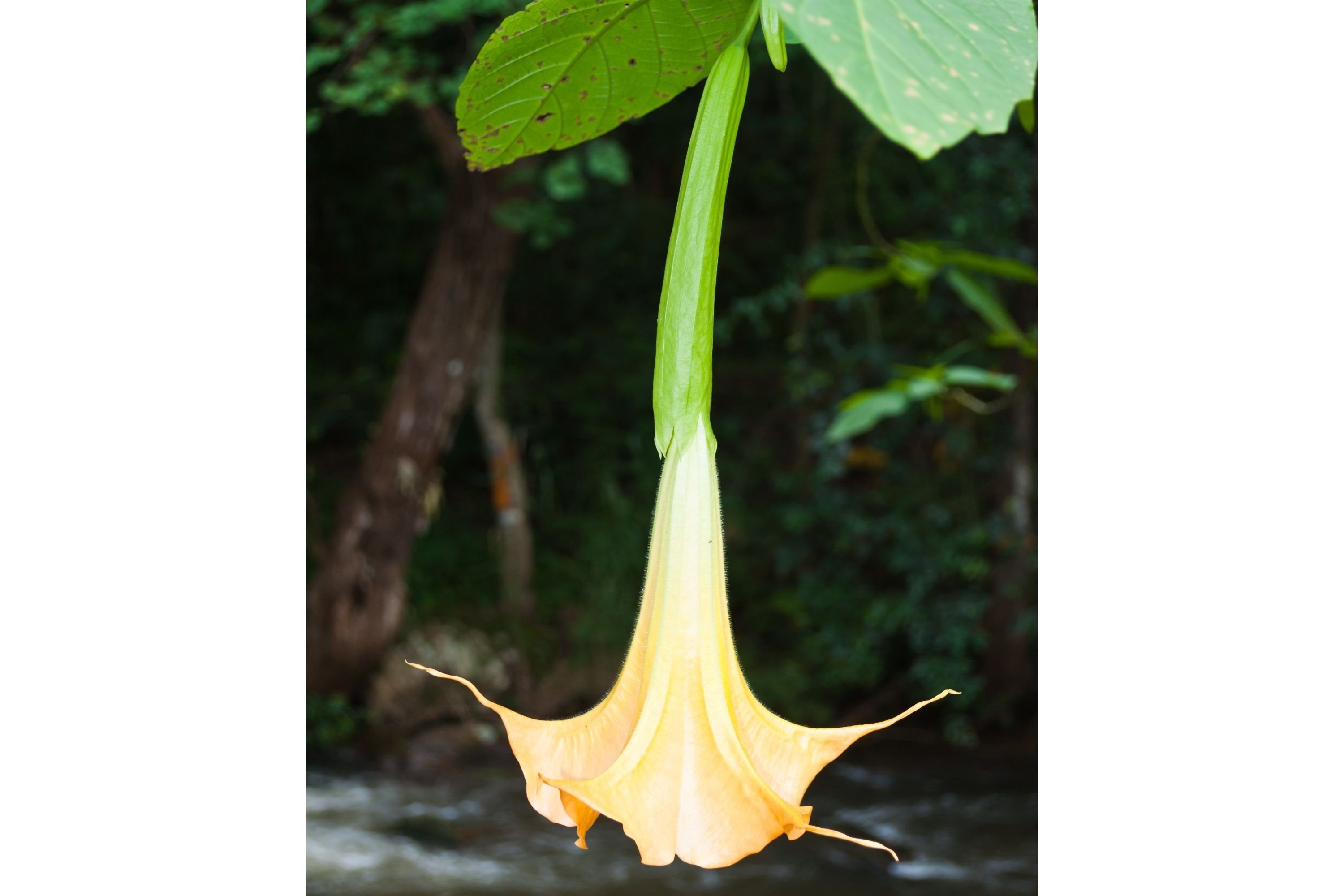Angel’s trumpets
(Brugmansia versicolor)

Description
Brugmansia versicolor is a species of plant in the family Solanaceae, commonly known as “angel’s trumpets”. They are endemic to Ecuador. Since March 2014, they have been listed as Extinct in the Wild by the IUCN. Brugmansia versicolor is a bush or small tree reaching 3.0–4.9 m (10–16 ft) in height. It has an alternate insertion of elliptic/oblong leaves that are entire with smooth edges. One of the most prominent characteristics of B. versicolor is the presence of giant drooping flowers which hang upside down, which is where it gets its common name of Angel's Trumpet. The flowers are the largest of all Brugmansia at 300–510 mm (12–20 in) in length. They open first white, but then may age to turn peach, pink, apricot or remain white. There are currently 7 distinct species of Brugmansia recognized, and they are very similar to their close relative Datura. For this reason the two genera were commonly mistaken for one another. “It was not until the discovery of the New World that Brugmansias appeared in the documented floras and later in gardens of the Old World. Initially Brugmansias were grouped with Daturas by the famous botanist Carl Linnaeus, who documented them in 1753 from a drawing and not from live plant material. In 1805, the South African taxonomist Christiaan Hendrik Persoon created a separate genus for Brugmansia, but it was not until 1973 that Tom E. Lockwood created a final division between the two genera. The different genera of the family Solanaceae include many crop plants such as potatoes and tomatoes, as well as several other poisonous plants. Brugmansia species are native to the western part of South America, originating from Guayaquil Basin and south of the Gulf of Guayaquil in Ecuador. They are usually found growing in flat areas at elevations up to 790 m (2,600 ft), but are also frequently cultivated at low elevations throughout the tropics. Brugmansia versicolor is a hermaphrodite that reproduces perennially. It has long, narrow, fusiform berries that are up to 21 cm (8.3 in) in length. Brugmansia reproduce by the production of seeds. The major pollinators are thought to be various species of insects, though this has yet to be proven.
Taxonomic tree:







